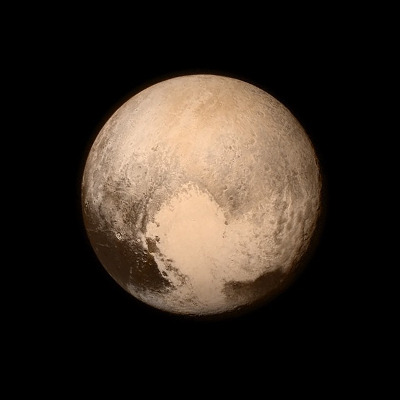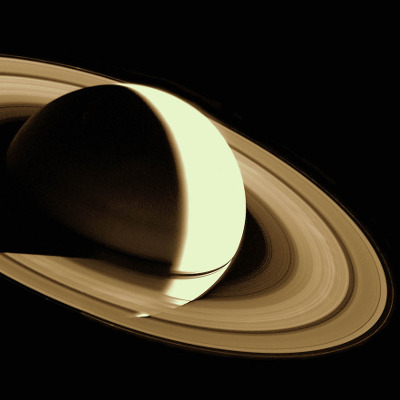Wach Auf



wach auf
More Posts from Cozy-airlessness and Others
1989: ‘Shuttle Evolution “Block II”’

(sorry for low resolution, I cannot find a higher-res version anywhere)
1989: A concept drawing for a never-realised next-generation Space Shuttle, capable of carrying 8 astronauts and possibly over 30 tonnes to low-Earth orbit. The most noteworthy feature is the detachable cockpit with engines which could serve as a launch escape-system or a lifeboat during an incident in-orbit. It was to use its lifting body, wings, and body flap to glide to a runway and presumably land on skids. The escape system would enable a crew's escape at any point during launch or orbital flight.
Comments and observations
The inclusion of this escape-system in the orbiter would necessitate a gap in the heatshield at the nose, one of the hottest parts of the vehicle during re-entry. That's obviously a big problem. Further, a pad-abort would seem to be very impractical. 3 seconds at 8 Gs would only send the capsule about 2 km high, probably not high enough to glide towards the nearest runway, especially with those stubby wings. Perhaps an emergency parachute system and a splashdown of the capsule would have been more sensible?
Other changes to the orbiter seem to be in the interest of improving gliding performance, such as two wing-tip vertical stabilisers instead of one tail-mounted one (to eliminate wing-tip vortices), shrinkage of the orbital manœuvring system pods by relocation of the OMS's propellant-tanks into the wings, and the addition of canards which would probably yield greater pitch-authority during landing.
The system also proposes replacement of the solid rocket boosters with liquid-hydrogen–fuelled boosters. These could provide a greater payload capacity, as well as greater control of thrust during ascent, and the possibility of an emergency engine shutdown, improving the crew's safety. The biggest and most obvious downside would be increased cost. The drawing doesn't specify whether the LFBs are intended to recover themselves by deploying parachutes, but what's certain is that saltwater generally damages delicate chemical rocket engines, so they probably couldn't just plop into the ocean like the real Shuttle's SRBs did.









FROM OUTER SPACE
[ julia soboleva ]

The first test flight of the Apollo Lunar Module in Earth orbit launched from Cape Kennedy launch complex 37B aboard Saturn IB SA-204R on January 22, 1968.

Here, we see LM-1 being loaded into the spacecraft adapter that would protect it during launch. The nose cone (at right, under a protective blue cover) would go on top.
The unmanned LM-1 flew without several systems (like landing gear) that it wouldn't need for the test and the windows in front were covered with aluminum plates. After testing of the descent and ascent stage engines, the two sections of LM-1 burned up in the atmosphere on re-entry.

Path of the Hermes spacecraft in “The Martian”.
Red dot - Mars
Blue dot - Earth
Moving white dot - Hermes

The spacecraft Rosetta made this incredible picture during a Mars flyby!








We love you, Neil.

NASA Astronaut Anna Fisher photographed by John Bryson for Life Magazine, May 1985.

biggest betrayal is when it’s supposed to thunderstorm and it doesn’t

ariane yeong
-
 ararinrin reblogged this · 1 month ago
ararinrin reblogged this · 1 month ago -
 ararinrin liked this · 1 month ago
ararinrin liked this · 1 month ago -
 bloominsilence liked this · 1 month ago
bloominsilence liked this · 1 month ago -
 halleyy liked this · 1 month ago
halleyy liked this · 1 month ago -
 respirdal liked this · 1 month ago
respirdal liked this · 1 month ago -
 legalone liked this · 1 month ago
legalone liked this · 1 month ago -
 spookymeowz02 reblogged this · 2 months ago
spookymeowz02 reblogged this · 2 months ago -
 spookymeowz02 liked this · 2 months ago
spookymeowz02 liked this · 2 months ago -
 echoingmarch reblogged this · 2 months ago
echoingmarch reblogged this · 2 months ago -
 thefanofstar liked this · 2 months ago
thefanofstar liked this · 2 months ago -
 hyldoc liked this · 2 months ago
hyldoc liked this · 2 months ago -
 mutilatedcarapace liked this · 2 months ago
mutilatedcarapace liked this · 2 months ago -
 b-volodarskaya liked this · 2 months ago
b-volodarskaya liked this · 2 months ago -
 localfruitsaladexe liked this · 2 months ago
localfruitsaladexe liked this · 2 months ago -
 panchiqo liked this · 2 months ago
panchiqo liked this · 2 months ago -
 micko-micko liked this · 2 months ago
micko-micko liked this · 2 months ago -
 corvidlikeshiny liked this · 2 months ago
corvidlikeshiny liked this · 2 months ago -
 meissama liked this · 2 months ago
meissama liked this · 2 months ago -
 sweetv0 liked this · 2 months ago
sweetv0 liked this · 2 months ago -
 chumnkyfrog liked this · 2 months ago
chumnkyfrog liked this · 2 months ago -
 apolloites liked this · 2 months ago
apolloites liked this · 2 months ago -
 sleepy-yim liked this · 2 months ago
sleepy-yim liked this · 2 months ago -
 08-plaza reblogged this · 2 months ago
08-plaza reblogged this · 2 months ago -
 cat--girls reblogged this · 2 months ago
cat--girls reblogged this · 2 months ago -
 svaldalkari liked this · 2 months ago
svaldalkari liked this · 2 months ago -
 a-humble-toad liked this · 2 months ago
a-humble-toad liked this · 2 months ago -
 40billionowls liked this · 2 months ago
40billionowls liked this · 2 months ago -
 youmadesoup liked this · 2 months ago
youmadesoup liked this · 2 months ago -
 gorgonei0n reblogged this · 2 months ago
gorgonei0n reblogged this · 2 months ago -
 dyketower reblogged this · 2 months ago
dyketower reblogged this · 2 months ago -
 dyketower liked this · 2 months ago
dyketower liked this · 2 months ago -
 maze-a-blaze liked this · 2 months ago
maze-a-blaze liked this · 2 months ago -
 the-magnalotl liked this · 3 months ago
the-magnalotl liked this · 3 months ago -
 bootdork reblogged this · 3 months ago
bootdork reblogged this · 3 months ago -
 bootdork liked this · 3 months ago
bootdork liked this · 3 months ago -
 omnipotantchief liked this · 3 months ago
omnipotantchief liked this · 3 months ago -
 bravevictor liked this · 3 months ago
bravevictor liked this · 3 months ago -
 cynicalmeatbag reblogged this · 3 months ago
cynicalmeatbag reblogged this · 3 months ago -
 cynicalmeatbag liked this · 3 months ago
cynicalmeatbag liked this · 3 months ago -
 lest4president liked this · 3 months ago
lest4president liked this · 3 months ago -
 deeznerthenutter liked this · 3 months ago
deeznerthenutter liked this · 3 months ago -
 hotboy81 liked this · 3 months ago
hotboy81 liked this · 3 months ago -
 artioprotection liked this · 3 months ago
artioprotection liked this · 3 months ago -
 ski89 liked this · 3 months ago
ski89 liked this · 3 months ago -
 that-vamp-nevan416 liked this · 3 months ago
that-vamp-nevan416 liked this · 3 months ago -
 a-debt--repaid liked this · 3 months ago
a-debt--repaid liked this · 3 months ago -
 kuratm liked this · 3 months ago
kuratm liked this · 3 months ago -
 moorh5n liked this · 3 months ago
moorh5n liked this · 3 months ago -
 viddasaala liked this · 3 months ago
viddasaala liked this · 3 months ago

21 · female · diagnosed asperger'sThe vacuum of outer space feels so comfy :)
233 posts